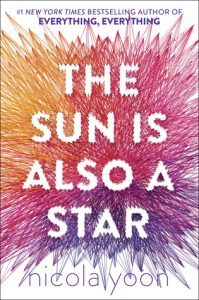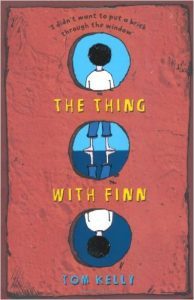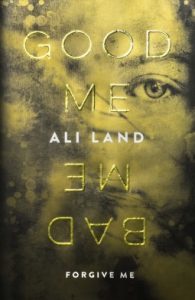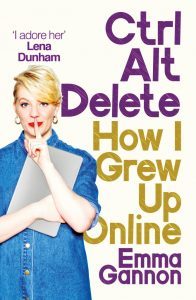Claire Hennessy's Blog, page 12
March 26, 2017
Book Review: Little Deaths
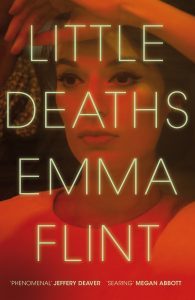
In mid-sixties Queens, two small children disappear from their apartment – later found dead, presumed murdered. Their single mother, Ruth, is criticised by police and public alike for not performing her grief in the right way. She’s too beautiful, too sexy – a cocktail waitress who drinks too much and has had many lovers. Both the cops and the journalists are convinced that she killed her own children to prevent her ex-husband from getting custody of them.
Inspired by a true story, this is an engrossing literary crime novel that immerses you in the time and place, and skilfully portrays the fraught relationship between justice and the media. The court of public opinion has condemned the apparent femme fatale long before she’s imprisoned, while insights into Ruth’s life present us with a woman who feels both horribly guilty at not being able to protect her children and who did, nonetheless, resent the drudgery of working motherhood. She is cold to an outsider but an understandable, if flawed (hurrah!) woman to the reader. This is Flint’s debut novel and further inspired-by-true-crime stories with ‘unorthodox’ women at their centre are reportedly on the way.
March 23, 2017
Book Review: Someone Else’s Child
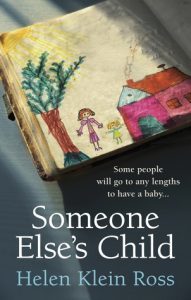
Lucy Wakefield is an ordinary woman who longs for a baby – a longing that tears her marriage apart and leaves her searching desperately for a child that might need adoption. A trip to Ikea leads her to an abandoned baby girl, who she first takes outside to escape the chill of the air-conditioning, and then takes home.
The deed is done. The child has been stolen. She is Lucy’s now, and Mia – as she is renamed – grows up to believe the story that everyone else has been told. This was a legal adoption. Mia’s mother wanted her to go to a good home.
Meanwhile, the birth mother, Marilyn, is frantic, then depressed, and eventually reinvents herself as a semi-irritating New Ager. She remarries – her first marriage, like Lucy’s, cannot withstand the pain of childlessness – and has three more children.
When Mia is twenty-one, she discovers the truth. Cue moral dilemma time: is Lucy a monster for having made one bad decision, even though she’s been a caring mother since? Can Marilyn ever be Mia’s real mother again?
Told in alternating viewpoints, including sidebars from minor characters, this is a Picoult-esque tale of what it means to be a mother and what it means to be a good mother. A page-turner, with solid prose: nothing too extraordinary here but a diverting read.
March 19, 2017
Book Review: The Sun Is Also A Star
“America’s not really a melting pot. It’s more like one of those divided metal plates with separate sections for starch, meat, and veggies,” seventeen-year-old Natasha reflects on her last day in the United States. Having lived in New York for almost a decade as undocumented migrants, her family’s time has run out: they’re about to be deported back to Jamaica. And it’s all her father’s fault.
Daniel is an aspiring poet from a Korean family with the day off school to attend a Yale admissions interview. When his path intersects with Natasha’s quest to find a lawyer that can help her family stay in the country, he falls slightly-creepily in love with her and decides to use a scientifically-proven method (asking certain questions and then staring into each other’s eyes for four minutes) to get it all to work. It’s an irritating contrivance that the book doesn’t need; the intensity of the situation slowly builds into a believable attraction between the two of them.
More interesting than the romance is the universe around these two teenagers and the flickers of connection between individuals that spark changes for good and bad that day. Kindness from a stranger has the power to alter the course of a life. An accident prompts an affair, which in turn causes difficulties for the protagonists. Natasha and Daniel’s chapters are interspersed with omniscient vignettes that offer up a wider view of things, and although these are sometimes a little too information-heavy (there are sections not just on family history but on the cultural politics of black hair and Korean-owned businesses) they make the novel much more than a whirlwind love story.
Despite the sometimes-too-philosophical dialogue (you know the sort – the John Green Teen) it’s a compelling read, and Natasha in particular is a relatable protagonist. The epilogue is also most pleasing indeed. The Sun Is Also A Star was a National Book Award finalist and follows another dual-perspective YA romance, Everything Everything.
March 17, 2017
£0.99 only for St Patrick's Day!
March 16, 2017
Book Review: The Thing With Finn
Ten-year-old Danny has run away. It’s best for everyone. Everything has been strange and hard at home since ‘the thing with Finn’ – which the astute reader will realise very quickly is the death of his twin brother, even though the circumstances surrounding this event are kept from us until the very end of the novel. When your identical twin has died and people are still asking, thoughtlessly, which one you are, it stings. So Danny needs to escape, eventually ending up on an island with someone who’s gone through his own loss.
Despite the tough subject matter, this is also laced with humour and lots of toilet jokes (there is apparently a rule that books with boys in them must have these). At times some of the reflections feel a little too profound, nudging this towards a book for readers slightly older than the characters.
“Now that I think about it I sort of know why people are always running around all over the place all the time. I think they’re trying to run away from being background scared. It’s as if running away from it is a kind of pretending it isn’t there, that it isn’t chasing you.
It starts as soon as you know people don’t last.”
Cheerful stuff, indeed. Danny is a heartbreaking character you can’t help but root for, and wish so desperately he didn’t have to hurt so much.
March 14, 2017
Banshees are not Like Other Girls
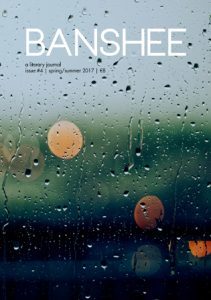
Spring/summer 2017
Some writerly updates:
Issue #4 of Banshee, a literary journal featuring short stories, flash fiction, essays and poetry, is available to pre-order now and will launch on Thursday March 30th at Books Upstairs.
Submissions for issue #5 (autumn/winter 2017) are open until Friday March 31st – details available here.
There’s a whole load of creative writing workshops kicking off in Dublin soon at the Big Smoke Writing Factory, some mine and some not but all very much highly recommended.
I’ll be in Galway for the Cúirt Festival at the end of April, reading an excerpt from my work, facilitating one of the Cúirt Labs for teenagers, and delivering a YA masterclass for adults.
The folks over at Dept 51 in Eason’s did a cover reveal for my new YA novel, Like Other Girls (out May 25th).
Coming May 2017...
March 12, 2017
Book Review: Good Me Bad Me
Disturbing, compelling, twisted, unsettling, uneasy, upsetting . . . oh, there are many words you could use for Good Me Bad Me, Ali Land’s debut novel. Fifteen-year-old Milly now lives with a foster family, where the father – big-hearted (yet also professionally-fascinated) psychologist Mike – has a tendency to take in troubled strays like her. His wife Saskia has mentally checked out of it all, spending her time either high or having sex with her yoga instructor, and their daughter Phoebe – the same age as Milly – is outraged by and resentful of it all.
What Phoebe doesn’t know – what Milly’s been warned only Mike and a handful of others can know – is that the latest lurid criminal case splashed all over the tabloids is centred on Milly’s mother. Which is to say, Milly’s mother, and the nine children she’s accused of murdering.
As the trial draws nearer, with the ongoing countdown acting as a ticking clock, Milly knows she’ll have to testify. She’s already given evidence, helped destroy her mother’s life – but she still feels her mother’s influence within her. She yearns to be reassured that she’s nothing like her mother. That she won’t grow up to be a psychopath.
Her often-fragmented narration is heart-wrenching and unsettling at the same time. This is not a girl who thinks about the world in a ‘normal’ way. This is a girl who’s been both horribly abused by her mother and misses her terribly, who is both glad to be free and horribly guilty about what she’s done. And as she enacts tiny moments of revenge on Phoebe and her friends, who insist on making her life hell, we begin to wonder whether this fear of turning out like her mother might be a reasonable one.
Is it possible to ever recover from such a traumatic childhood? Well, yes, if you’re writing a handbook for those working in the mental health sector, but when it’s a psychological thriller, no. No it most certainly is not. If you enjoy your dark-twisted-screwed-up women, this certainly fits the bill.
March 9, 2017
Book Review: 13 Minutes
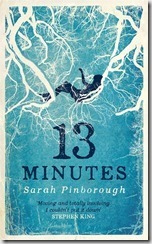
Dark, dysfunctional teenage girls, how I love you! Think Cat Clarke, Christopher Pike, Megan Abbott and Robin Wasserman to get a sense of this psychological thriller about two ex-best friends – the outsider, Becca, who’s busy getting high with her musician boyfriend, and the queen of the ‘Barbies’, Tasha, who’s just been pulled out of a freezing cold river.
Having been dead for thirteen minutes, Tasha begins keeping a diary to process her feelings – at her therapist’s request – and also to see if she can recover the memories of that night. Her two best friends – Jenny and Hayley, her subordinate Barbies – seem terrified she’ll remember. To find the truth, she needs to talk to someone she can trust: Becca.
The bitchiness, power games and borderline-sociopathy of teenage-girl friendships are on full display here, coupled with an authentic take on classroom politics. Even as the police are involved, there’s still a school play to work on (The Crucible – of course) and gossipy classmates or clingy friends to contend with. It feels very, very real, even as the body count increases. A most enjoyable read indeed.
March 5, 2017
Book Review: Ctrl Alt Delete
Emma Gannon is part of that strange new generation who make a living from the internet, whose blogging about the everyday has led to writing and journalism and speaking engagements and who applauds the entrepreneurial spirit of vloggers and other creator/influencer types.
She’s only a couple of years younger than me but the world she describes varies from familiar to terrifyingly alien. In the first two of her series of essays about her relationship with the internet, she depicts the stresses of MSN conversations and selecting the perfect profile picture – not just for strangers but for people at school, for friends-of-friends, for people you know – as well as the thoroughly unpleasant experience of having private messages to a boy shared publicly. And all this before she turns fifteen.
Gannon is perfectly pitched as the person to illustrate how earlier online communications paved the way for the tangled and problematic mess of social media today (even though she is very much a fan of it) – just on the cusp of that point where it was the norm for online identities to be linked to your real-world ones, rather than being completely separate. (I was a teenager in fandom circles, where it was your secret world. When Bebo started up and normal people had online profiles, it was weird.)
As she grows up ‘with’ various different social networks, she emphasises the power there is in staying on top of new trends and new apps – something which sounds completely exhausting, but seems to be what she loves. She also addresses the trickiness of discussing issues online, especially feminism. It’s more breezy than thoughtful, perhaps in part because she’s more used to blogging, but as a quick read about internet culture for young people, it works.

